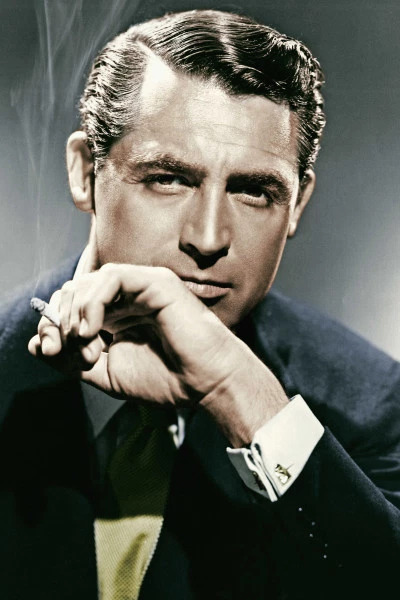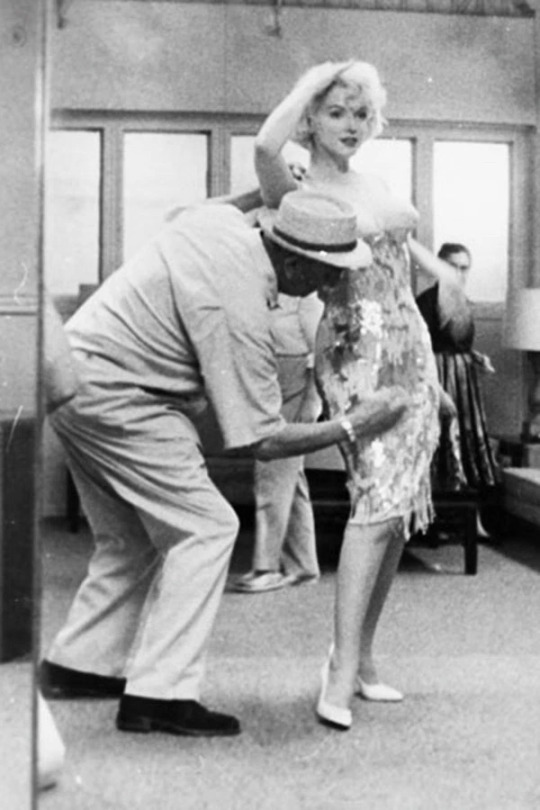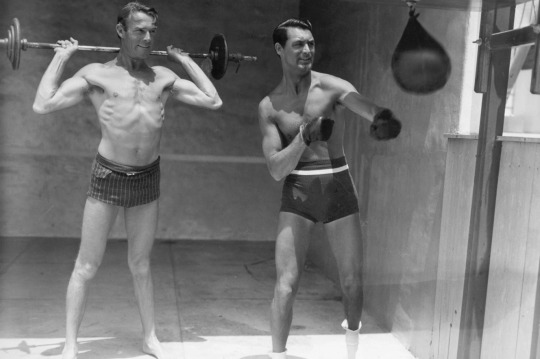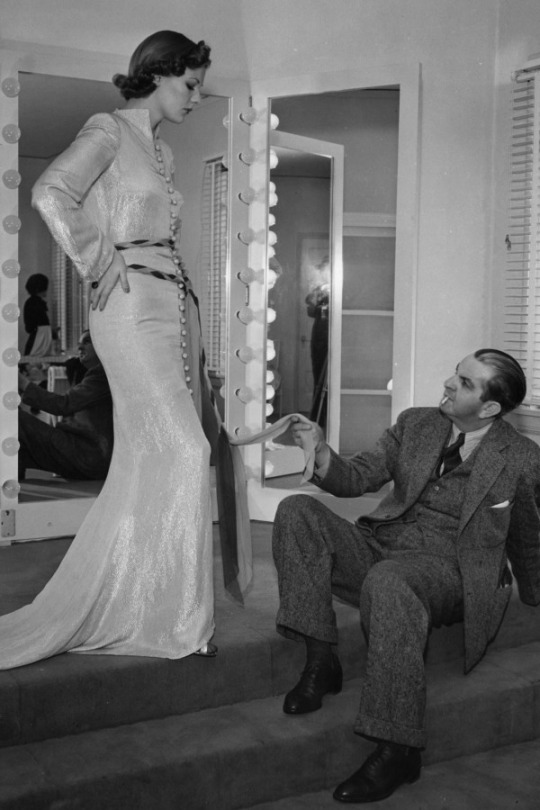#series: cary and randolph's domestic photographs
Explore tagged Tumblr posts
Text








Cary Grant & Randolph Scott: The Domestic Photographs
| | Part 1: Cozy Afternoons | |
Parts: 1 / 2 / 3 / 4 / 5 / 6
*Edited to add a new finding
#the amount of photos surprised me#some of them are only available in lq :/#cary grant#randolph scott#classic hollywood#old hollywood#1930s#series: cary and randolph's domestic photographs
80 notes
·
View notes
Link
Ninety years ago, future screen legend Cary Grant shared a Greenwich Village love nest with an Australian man who went on to win three Oscars.
That’s the provocative claim in “Women He’s Undressed,’’ a new documentary about celebrated costume designer Orry-Kelly (released Aug. 9 on DVD and video on demand) that adds a tantalizing new chapter to decades of speculation about Grant’s sexuality.

Between the film and Kelly’s recently published, long-suppressed memoir “Women I’ve Undressed,’’ a vivid portrait emerges of Grant as an ambitious young immigrant vaudevillian who reinvented himself so thoroughly, he ended up denying his true self in a homophobic industry.
“There was such a pressure to conform to what was considered an ordinary, normal life,’’ the documentary’s noted Australian director, Gillian Armstrong, told Out Magazine last year, referring to Grant’s four failed marriages to women. “Orry refused to hide his sexuality with a fake marriage. He had such a great sense of personal integrity, and we wanted to capture that sense of bravery in the film.’’
Kelly, who was seven years older, writes in his memoir that he met the struggling performer Archibald Leach — who would change his name to Cary Grant in 1931 — just before his 21st birthday in January 1925.

Leach had been evicted from a boarding house for nonpayment, and had turned up at Kelly’s artist’s studio at 21 Commerce St. in the West Village with a tin box containing all his worldly possessions. He promptly moved in with Kelly.
“It was a city of bachelors,’’ film historian William J. Mann says in the documentary, arguing that Kelly and Leach were definitely a couple. “You were surrounded by men who were openly living in ways you couldn’t imagine back home.’’
Kelly says in his book that Leach was suffering from an unspecified illness during their first few months of cohabitation, and he paid the younger man’s doctor bills. The “devastatingly handsome” Leach, who had come to America from his native England as a teenager as part of a stilt-walking troupe, was barely scraping by, working occasionally as a carnival barker in Coney Island and donning a threadbare suit as a paid escort for women while seeking work in vaudeville.
Kelly, who was painting murals for speakeasies and trying to break into show business as a set designer, had developed a lucrative sideline of hand-made ties — and Leach volunteered to stencil on designs and sell them backstage at vaudeville houses for a cut of the action.
Branching out a couple of years later, the two men briefly ran their own speakeasy in Manhattan — and had an even more short-lived casino in Nevada before they were shut down by gangsters who demanded money to spare their lives.
Kelly’s memoirs, and the documentary, chronicle his volatile, on-and-off relationship with the actor over three decades. While Kelly stops short of claiming that Leach was his boyfriend — something the documentary states outright — Kelly leaves a clear impression of someone whose heart was broken many times.
He was clearly annoyed with Leach’s obsession with blond women, “though he always comes home to me.’’ And Kelly describes being knocked out cold by Archie “for three hours’’ when he criticized his roommate for ignoring his vaudeville guests (including Jack Benny, George Burns and Gracie Allen) at a party while trying to persuade Charlie Chaplin’s sister-in-law to help him arrange a screen test.
“The physical violence between the men [was] not uncommon between homosexual men of the period,’’ Katherine Thompson, the documentary’s writer, told The Post. “A combination of self-loathing and confusion was manifested in a punch-up or, on another occasion, Grant throwing Kelly out of a moving vehicle.’’
By 1931, both men were pursuing their destiny in Hollywood — the newly renamed Cary Grant had been signed to a $350-a-week contract by Paramount, while Kelly had begun a 12-year tenure as the head of the Warner Bros. costume department, eventually designing Ingrid Bergman’s famous wardrobe for “Casablanca.” They shared quarters again for a few weeks in Tinseltown, enjoying 65-cent drugstore dinners every night.

But there were an increasing number of arguments over the newly christened Grant’s women — and the actor’s demand that Kelly reimburse him $365 for meals and boxing-match tickets that he kept track of in a little red book. Kelly paid off the bills and suggested that Grant move in with another handsome young Paramount contractee, Randolph Scott.
The debate over whether the former Archie Leach was gay, bi or straight has centered for decades around his on-and-off cohabitation with Scott in a beach house in Malibu, which was documented in a famous series of still photographs of them in domestic poses.
When Grant married actress Virginia Cherrill in 1934, Mann says in the documentary, Scott attempted suicide. They were living together again after the end of Grant’s marriage in 1935, and re-reunited once more after Scott’s first marriage (1936-1939) to a duPont heiress ended. (Grant’s 1942 application for US citizenship lists him and Scott — who signs as a witness — as living at the same address.) Around this time, Grant threatened to sue gossip columnist Hedda Hopper for implying he wasn’t “normal.’’ (And in 1980, he actually brought a defamation suit against comedian Chevy Chase, who was forced to issue a retraction of his joking reference to Grant as a “homo.’’)
Grant and Kelly, meanwhile, had drifted apart. “He was adjusting to the mask of Cary Grant,’’ Kelly writes. “A mask that became his career, a career that became Grant.’’
The two crossed paths in 1941, when Grant made “Arsenic and Old Lace’’ at Warner Bros.
“There was quite a bit of tension between the two,’’ Mann says in the documentary. “One day, the radio show ‘Queen for a Day’ had sent a limousine to the studio lot with [its title] emblazoned on its side. Cary turned to Orry and said, ‘Orry, your limo has arrived.’ This was a real low blow from Cary Grant, with whom he had an intimate personal relationship.’’
Kelly had a drinking problem that eventually cost him his job at Warner and landed him in rehab — but he made a remarkable comeback that netted him Oscars for “An American in Paris’’ (1951), “Les Girls’’ (1957) and “Some Like it Hot’’ (1959), for which he designed unforgettable dresses for Marilyn Monroe.
Grant re-entered Kelly’s life in the late 1950s, when he asked if he could visit Kelly’s studio to purchase some paintings as gifts.
Kelly’s book implies that Grant (who Kelly says visited on multiple occasions) was more interested in discouraging Kelly from writing about their relationship — and the film says Grant may have used his influence to block the publication of Kelly’s memoir. (The manuscript was discovered in a pillow case at an Australian relative’s home in 2014 while the documentary was in production; it is available only as an audio book in the US.)
“Cary always told me, ‘Tell them nothing,’ ” Kelly writes. “I don’t know why. There was never really anything to hide.’’

But the cheeky Aussie ends his book with a devastating anecdote about the notoriously cheap Grant. At the time of their final reunion, Kelly was designing costumes for “Auntie Mame’’ (1957) starring Rosalind Russell, Grant’s co-star in “His Girl Friday’’ (1940) and a close friend.
After he and Grant lunched together, they drove over to Russell’s dressing room on the Warner Bros. lot.
“I mentioned his beautiful Rolls Royce outside, and Cary remarked that he had another, just like it, in London. ‘By the way, aren’t you going to London?’ he asked [Russell].
“Roz said, ‘Yes, I’m going over in ten days.’ ‘Why don’t you use my Rolls,’ Cary said.”
Russell was thrilled until Grant added: “I tell you what to do Roz, when you arrive in London, call … my agents. They will give you the rental fee and the cost of the chauffeur.’’
Kelly says there are “too many instances where Cary Grant’s old friends had been disappointed by him.’’ He quotes Russell as saying, “He flits around, hiding from his own shadow, hoping nobody will notice, or [worries] that his shadow may expose the image he has created for himself.’’
The former Archie Leach never publicly acknowledged his relationship with Kelly — but when his old friend died of liver cancer in 1964, Grant was one of the pallbearers. He retired from acting two years later, when his only child was born from his fourth marriage to actress Dyan Cannon.
The enigmatic superstar was five years into his fifth and final marriage when he died, 30 years ago this November. Randolph Scott, whose second marriage endured 43 years and produced two children, died two months later.
2 notes
·
View notes
Text










Cary Grant & Randolph Scott: The Domestic Photographs
| | Part 6: Mealtime | |
Parts: 1 / 2 / 3 / 4 / 5 / 6
#the end#they ate a lot#and always took pictures while doing it#cary grant#randolph scott#classic hollywood#old hollywood#1930s#series: cary and randolph's domestic photographs
50 notes
·
View notes
Text








Cary Grant & Randolph Scott: The Domestic Photographs
| | Part 3: Beach & Pool | |
Parts: 1 / 2 / 3 / 4 / 5 / 6
#cary grant#randolph scott#classic hollywood#old hollywood#1930s#series: cary and randolph's domestic photographs
52 notes
·
View notes
Text





Cary Grant & Randolph Scott: The Domestic Photographs
| | Part 4: Fun in the Kitchen | |
Parts: 1 / 2 / 3 / 4 / 5 / 6
#cary grant#randolph scott#classic hollywood#old hollywood#1930s#series: cary and randolph's domestic photographs
31 notes
·
View notes
Text





Cary Grant & Randolph Scott: The Domestic Photographs
| | Part 5: House Tasks | |
Parts: 1 / 2 / 3 / 4 / 5 / 6
#cary grant#randolph scott#classic hollywood#old hollywood#1930s#series: cary and randolph's domestic photographs
23 notes
·
View notes
Text








Cary Grant & Randolph Scott: The Domestic Photographs
| | Part 2: Games & Sports | |
Parts: 1 / 2 / 3 / 4 / 5 / 6
#cary grant#randolph scott#classic hollywood#old hollywood#1930s#series: cary and randolph's domestic photographs
16 notes
·
View notes
Text
Posts Series

These are the posts series I've made. This list will be updated continuously.
Blog's 1st Anniversary
Cary Grant & Randolph Scott: The Domestic Photographs
2023 Christmas Day
2024 Christmas Day
F. X. and J. C. Leyendecker's advertising illustrations for Kuppenheimer
1980s Hugo Boss' advertisements
1930s–40s Munsingwear's advertisements
2023–2024 New Year
2024–2025 New Year
Revisiting the Charts
Sage Sohier's portraits of male/male couples
5 notes
·
View notes
Text
Famous friends and roommates Cary Grant and Randolph Scott swimming and other sunny stuff.








Cary Grant & Randolph Scott: The Domestic Photographs
| | Part 3: Beach & Pool | |
Parts: 1 / 2 / 3 / 4 / 5 / 6
#cary grant#randolph scott#classic hollywood#old hollywood#1930s#famous friends#series: cary and randolph's domestic photographs
52 notes
·
View notes
Text
If @50spoetics domestic Zibwick fanfiction had more fanart I think it would be redraws of these XD








Cary Grant & Randolph Scott: The Domestic Photographs
| | Part 1: Cozy Afternoons | |
Parts: 1 / 2 / 3 / 4 / 5 / 6
#the amount of photos surprised me#some of them are only available in lq :/#cary grant#classic hollywood#randolph scott#old hollywood#1930s#series: cary and randolph's domestic photographs#lackadaisy#lackadaisycats#zibwick#dorian zibowski#wick sable#wick x zib#fanfiction
80 notes
·
View notes